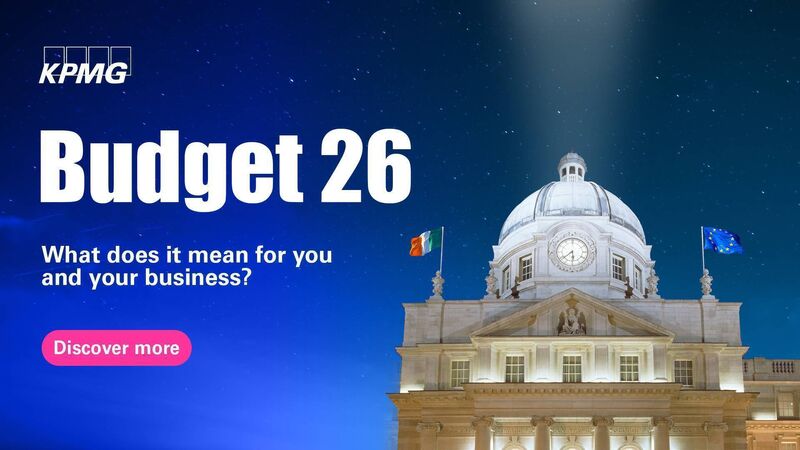Want to know what Budget 2026 means for you and your pocket? Use KPMG's Budget calculator

Use the KPMG Calculator to find out what Budget 2026 means for you.
KPMG Tax Director, , assesses Budget 2026 and finds that it did some good, but not a lot.

Safety and prudence were very much the watchwords for Ministers Donohoe and Chambers in Budget 2026. Pascal Donohoe mentioned safety at least four times in his presentation when he emphasised the importance of protecting the economy and the public finances during a period of global turbulence. Jack Chambers also stressed the need for prudence in his presentation.
In that light and in the context of the strong signals sent out by both Ministers Chambers and Donohoe and their Government colleagues in advance of budget day, it would have been foolhardy to expect any dramatic tax or spending announcements yesterday afternoon.
From an SME perspective, one welcome change was the increase in Entrepreneur Relief from a lifetime limit of €1 million to €1.5 million. The relief gives reduced Capital Gains Tax on disposals of qualifying business assets subject to that limit.
However, several pre-budget submissions sought an increase in the lifetime limit to €5 million. While any increase is welcome, the restrictive limit is quite frustrating for business owners and serial entrepreneurs who may start and sell several businesses over time.
It should be recognised that entrepreneurs can move their businesses elsewhere to avail of superior tax benefits.
Another step in the right direction is the increase in the R&D Tax Credit from 30% to 35%. KPMG had looked for a 50% rate for certain Greentech and high-tech related R&D activities but the increase announced yesterday will help Ireland keep pace with competitor jurisdictions in this regard. Minister Donohoe’s commitment to look at outsourcing and other aspects of the tax credit regime are very welcome.
The VAT reduction for hospitality and hairdressing businesses is a good thing, but only to a point. The question is if it is really addressing the underlying issue for the hospitality sector. The cost of labour, food, energy and inputs all keep going up. The VAT reduction could turn out to be a temporary fix which isn’t addressing underlying causes.
The ability of the Government or anyone else to ensure the reduction is passed on to consumers is questionable to say the least. If restaurants and hospitality outlets are closing due to their current cost base, it is difficult to see how they can pass on any VAT decrease to their customers.
The various measures to stimulate home building should be seen in a positive light. However, they are very much directed towards developers and are not expected to address affordability issues.
In that context, it was somewhat disappointing to note that there were no provisions to support employer-subsidised housing. Cork Chamber had sought tax reliefs for employers who provide or subsidising housing for employees and this could help employees to find accommodation near to their workplace – a very important consideration in an extremely tight labour market.
The enhanced deduction for qualifying apartments, along with reduced VAT rates, have the potential to incentivise developers, but they are not going to make apartments any more affordable. After all, developers can’t reduce prices if apartment building isn’t viable in the first place.
The Living City Initiative has been extended to 31 December 2030 with tax relief on qualifying regeneration projects to apply to properties built before 1975 and expanded to more regional towns. It is hoped that this will encourage more people to convert properties in town and city centres. The new note of realism is noteworthy as the previous scheme applied to properties built before 1915.
The Corporation Tax exemption for cost rental properties is also very welcome. This may help to incentivise investment in this very socially important sector.
The Ministers certainly achieved what they set out to do and produced a very prudent and safe budget. However, there is an argument that they could have gone further in their support for SMEs and entrepreneurs.
In his speech, Minister Chambers referred to the need for the same kind of vision shown by the founders of the State: “In the way Ardnacrusha transformed the State then, we are again at the beginning of an infrastructure revolution that will require bold ambition.”
Perhaps some of that boldness should have been directed to supporting SMEs.
Wondering what Budget 2026 means for you and your finances?
Well, making sense of it all is far easier than you might think, thanks to KPMG's excellent user-friendly calculator.
To access the calculator below, click on 'Accept All Cookies' at the end. Get all your questions answered with just a few simple clicks:








